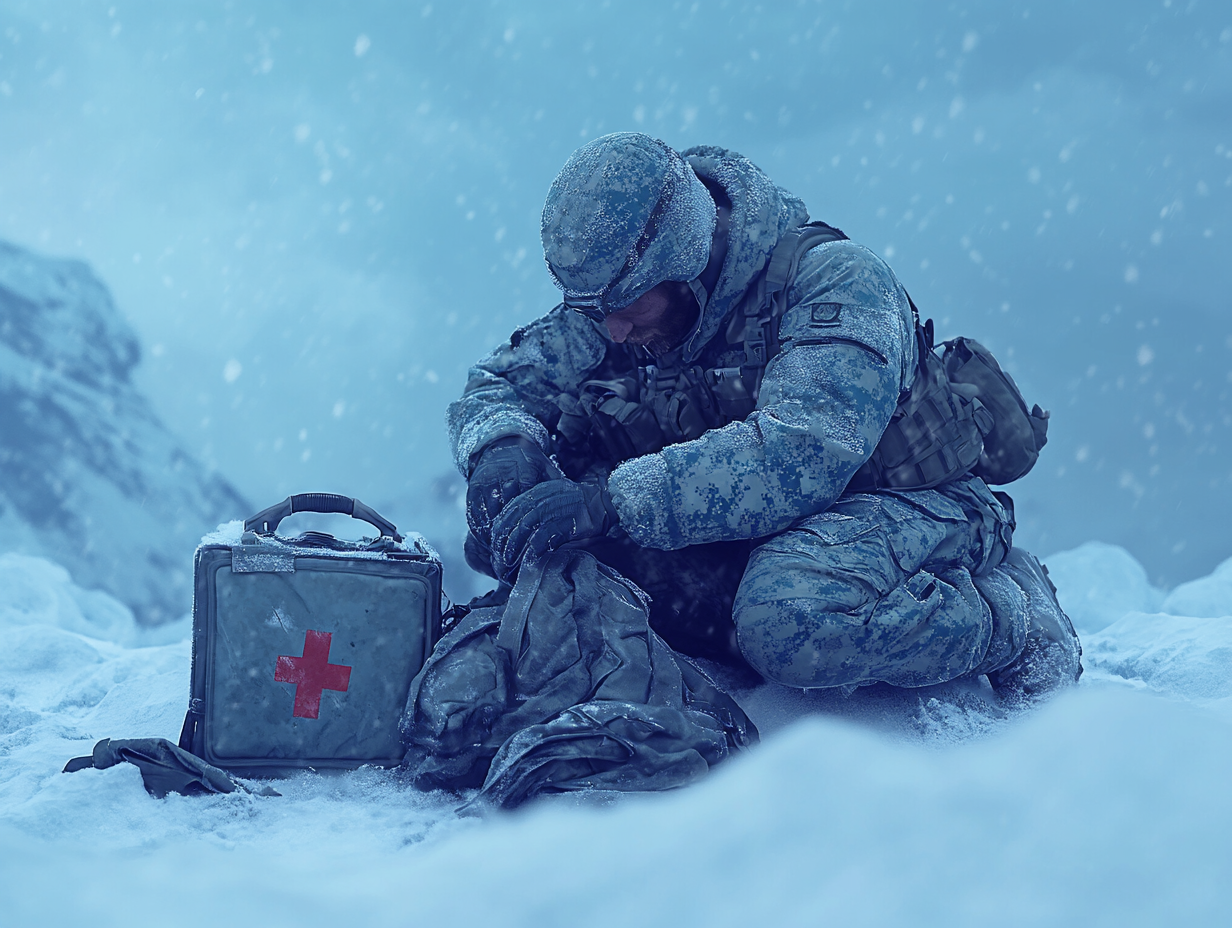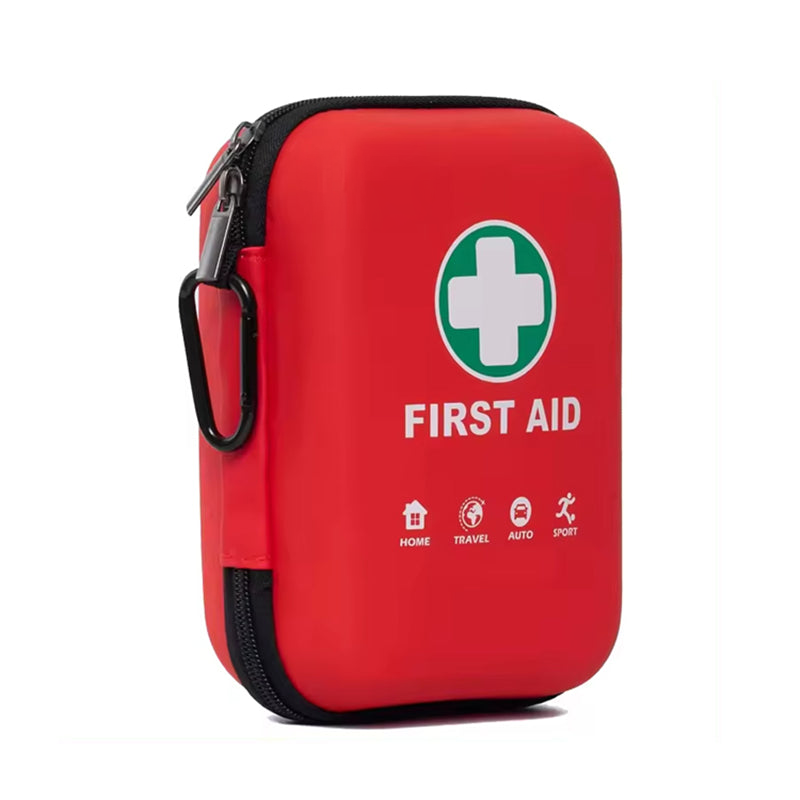Standard Configuration of a Military Tactical First Aid Kit

On the battlefield, soldiers constantly face life-threatening situations, whether from gunshot wounds, blast injuries, or other accidents. Timely and effective first aid can often be the key to survival.
The military tactical first aid kit, as an essential piece of equipment carried by soldiers, has a carefully designed standard configuration to provide comprehensive support for self-rescue or mutual aid in emergencies.
This article will detail the standard components of a military tactical first aid kit, including hemostatic tools, wound care supplies, breathing management tools, fracture stabilization tools, and tactical medical tools, and will delve into the purpose and usage of each tool to help readers fully understand this life-saving equipment.
Introduction: The Importance of a First Aid Kit
The battlefield environment is complex and unpredictable, and injuries can occur in an instant. A well-designed, well-equipped military tactical first aid kit not only helps soldiers respond to injuries quickly but also buys valuable survival time before professional medical help arrives. The standard configuration of a first aid kit is typically compact and portable yet powerful, covering a wide range of emergency needs, from bleeding control to fracture stabilization. Below, we will analyze its core components one by one.
Hemostatic Tools: Control Bleeding, Save Lives
Blood loss is one of the leading causes of fatalities on the battlefield, making hemostatic tools the most critical components of a first aid kit. A military tactical first aid kit typically includes the following three hemostatic tools:
1.1 CAT Tourniquet (Combat Application Tourniquet)
- Purpose: The CAT tourniquet is designed for rapid bleeding control in the limbs, effectively stopping arterial blood flow and preventing hypovolemic shock.
-
How to Use:
- Place the tourniquet about 2-3 inches (5-7 cm) above the wound.
- Tighten the strap and secure it, then twist the windlass until the bleeding stops.
- Record the time of application (write it on the tourniquet) to inform subsequent medical personnel.
- Precautions: The tourniquet should not be left in place for more than 2 hours, as prolonged use can lead to tissue necrosis. After application, the casualty should be moved to a medical facility as soon as possible.
1.2 Hemostatic Powder
- Purpose: Hemostatic powder is used for irregular or difficult-to-control bleeding wounds by accelerating blood clotting.
-
How to Use:
- Sprinkle the powder evenly over the bleeding wound.
- Cover the wound with sterile gauze or a pressure bandage and apply pressure for 2-3 minutes.
- Precautions: Avoid getting the powder in the eyes or respiratory tract. If bleeding continues, repeat the procedure.
1.3 Pressure Bandage
- Purpose: Pressure bandages are used to dress wounds, control bleeding, and protect the wound, often used for moderate bleeding situations.
-
How to Use:
- Position the gauze pad on the wound.
- Wrap the bandage tightly but not excessively, ensuring adequate pressure to stop the bleeding.
- Use the provided fastener (such as a buckle) to secure the bandage.
- Precautions: After dressing, monitor the wound. If blood begins to seep through, apply additional pressure or replace the bandage.
Wound Care: Protect the Wound, Prevent Infection
After bleeding is controlled, wound care is crucial to prevent infection and promote healing. The wound care supplies in the first aid kit include:
2.1 Disinfectant Solution
- Purpose: The disinfectant solution is used to clean the skin around the wound and reduce the risk of bacterial infection.
- How to Use: Apply an appropriate amount of disinfectant solution to a sterile gauze pad and gently wipe the area around the wound, avoiding direct contact with the open wound.
- Precautions: If the casualty is allergic to iodine or alcohol, inform the responder to avoid using irritating disinfectants.
2.2 Dressings
- Purpose: Dressings cover the wound, absorb exudates, and form a protective layer.
- How to Use: Cut the dressing to the appropriate size, apply it to the wound, and secure it with medical tape.
- Precautions: Keep the dressing sterile, and replace it promptly if it becomes saturated with blood.
2.3 Hemostatic Gauze
- Purpose: Hemostatic gauze combines bleeding control and dressing functions and is suitable for small to medium-sized wounds.
- How to Use: Place the gauze on the wound, apply pressure to stop the bleeding, and then secure it with a bandage.
- Precautions: The gauze should fit snugly against the wound to prevent further bleeding.
2.4 Medical Tape
- Purpose: Medical tape is used to secure dressings and bandages to ensure they stay in place.
- How to Use: Apply the tape along the edges of the dressing to ensure a firm attachment without tightening the skin.
- Precautions: When removing, do so slowly to avoid skin injury.
Breathing Management: Ensure Airway Patency
Breathing difficulties or chest trauma can quickly endanger life. The breathing management tools in the first aid kit are designed to address this need:
3.1 Nasopharyngeal Airway (NPA)
- Purpose: The NPA is used to maintain airway patency, particularly for unconscious casualties or those with tongue displacement.
-
How to Use:
- Choose the appropriate size (usually based on the length from the casualty's nostrils to the earlobe).
- Apply lubricant to the NPA and gently insert it into the nostril, advancing it toward the pharynx.
- Precautions: Avoid excessive force during insertion; if resistance is encountered, adjust the angle of insertion.
3.2 Chest Sealing Patch
- Purpose: The chest sealing patch is used to seal an open pneumothorax wound and prevent air from entering the chest cavity, preventing lung collapse.
-
How to Use:
- Clean the area around the wound, removing any blood or debris.
- Apply the chest seal over the wound, ensuring that the edges adhere firmly.
- Precautions: After applying the seal, monitor the casualty's breathing. If breathing difficulties persist, check if the seal has failed.
3.3 Portable Oxygen Device
- Purpose: The portable oxygen device provides supplemental oxygen to improve blood oxygen levels in cases of hypoxia or respiratory distress.
-
How to Use:
- Connect the oxygen mask or nasal cannula to the oxygen tank.
- Open the valve and adjust the flow rate to 2-4 liters per minute.
- Precautions: Keep away from open flames and ensure that the oxygen tank pressure is sufficient.
Fracture Stabilization: Stabilize the Injury, Minimize Further Damage
Fractures are common on the battlefield, and improper stabilization can worsen the injury. The fracture stabilization tools in the first aid kit include:
4.1 Splints
- Purpose: Splints are used to stabilize fractured limbs, reducing movement and pain.
- How to Use: Place the splint on both sides of the fracture and secure it with an elastic bandage or triangular bandage.
- Precautions: Before applying the splint, check the blood flow to the distal limb to ensure that it is not too tight.
4.2 Triangular Bandage
- Purpose: The triangular bandage can be used to sling an arm or stabilize other body parts and is highly flexible.
- How to Use: Fold the bandage into a strip and tie it around the injured area to secure it.
- Precautions: Ensure the injured part remains in a natural position during the stabilization.
4.3 Elastic Bandages
- Purpose: Elastic bandages provide even pressure to stabilize fractures or soft tissue injuries.
- How to Use: Start from the distal end and wrap the bandage upward, covering the splint or injury.
- Precautions: Monitor the color of the limb; if it turns purple or cold, loosen the bandage and reapply it.
Tactical Medical Tools: Supporting Aid Efficiency
Tactical medical tools provide convenience and improve operational efficiency during first aid:
5.1 Trauma Scissors
- Purpose: Trauma scissors quickly cut through clothing or bandages to expose the wound.
- How to Use: Cut along the seams of clothing, avoiding direct contact with the skin.
- Precautions: Regularly disinfect the scissors to maintain sharpness and cleanliness.
5.2 Medical Tweezers
- Purpose: Tweezers are used to remove foreign objects or assist in wound care.
- How to Use: Handle foreign objects with precision, avoiding any shaking or sudden movements.
- Precautions: Clean the tweezers before and after use to prevent infection.
5.3 Sterile Gloves
- Purpose: Sterile gloves protect both the rescuer and casualty from cross-contamination.
- How to Use: Ensure your hands are clean before putting on the gloves. Dispose of them after use.
- Precautions: Inspect the gloves for any tears or defects before use.
Conclusion: The Life-saving Value of the First Aid Kit
Although compact, the military tactical first aid kit carries the hope of survival on the battlefield. By using hemostatic tools to control bleeding, wound care supplies to prevent infection, breathing management tools to ensure airways remain open, fracture stabilization to minimize injury, and tactical medical tools for operational assistance, soldiers can navigate life-threatening situations more effectively.
However, no amount of equipment can replace proficiency in using the tools. It is recommended that soldiers regularly participate in first aid training to become familiar with each tool and its usage to ensure readiness in critical moments.
Additionally, regular maintenance of the first aid kit is just as important. Keep it in a waterproof bag, carry it at all times, and check the expiration dates and completeness of items periodically. The battlefield is unforgiving, but with adequate preparation, life can be safeguarded in times of crisis.
